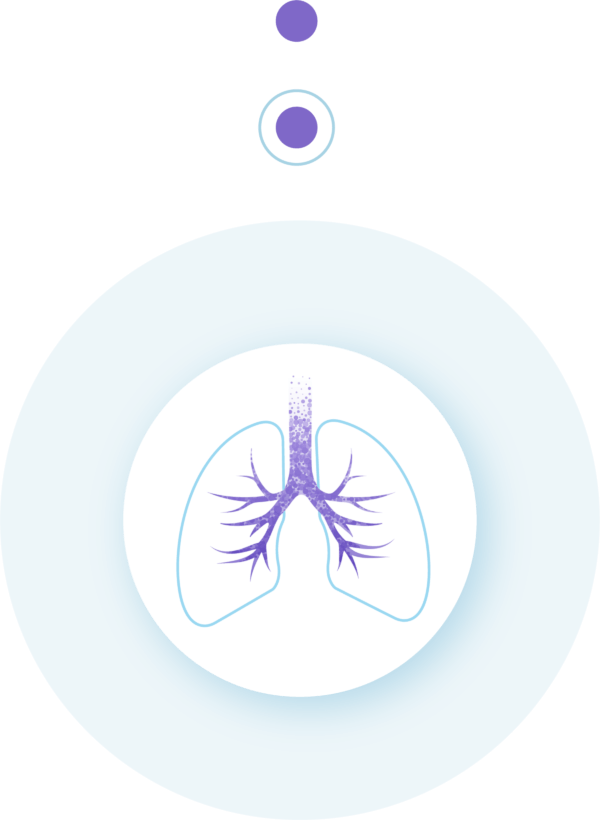Studieoverzicht
Study name: ML41176-BIO
| Histology | NSCLC, only non-squamous | ||
|---|---|---|---|
| Tumor stage | Stage III - IV | ||
| Host / recruiting site 1 | Antoni van Leeuwenhoek | Enrollment | Recruiting |
| Host / recruiting site 2 | UMC Groningen | Enrollment | Recruiting |
| Host / recruiting site 3 | MUMC+ | Enrollment | Closed |
| Host / recruiting site 4 | Radboud UMC | Enrollment | Closed |
| Therapy line | First line (1L) , Later line (≥2L) | ||
| PD-L1 expression | Low: 1 - 49% , High: ≥50% | ||
| Design |
Single arm Explorative multicenter biomarker study, stratifying for resistance (primary resistance, acquired resistance, no resistance) |
||
| Intervention | Standard chemo-immunotherapy (atezolizumab/paclitaxel/ carboplatin/bevacizumab q3 wks. iv) |
||
| Key outcome parameters | Progression Free Survival (PFS) in months according to RECIST v1.1 and divided into the following subgroups of response:
|
||
| Key inclusion criteria | Provision of signed and dated, written informed consent. Female and male subjects aged at least 18 years. Subjects with histologically- or cytologically-documented non squamous NSCLC with a documented driver mutation (such as EGFR, ALK, ROS, BRAF, MET, RET, NTRK1-3, KRAS, NRG1) Locally advanced or metastatic NSCLC, not amenable to curative surgery or radiotherapy. Evidence of radiological disease progression following first line TKI or any subsequent treatment lines with TKI only (for EGFR treated with either osimertinib or failure of other TKIs 2nd line or later) Previous course of chemotherapy is allowed, but not necessary as well ECOG performance status 0-1 with no deterioration over the previous 2 weeks and a minimum life expectancy of 12 weeks. At least one lesion, not previously irradiated, that can be accurately measured at baseline as ≥ 10mm in the longest diameter (except for pathological lymph nodes they must be ≥ 15mm in short axis) Females should be using adequate contraceptive measures, should not be breast feeding and must have a negative pregnancy test prior to start of dosing if of child-bearing potential or must have evidence of non-child-bearing potential by fulfilling one of the following criteria at screening: Male subjects should be willing to use barrier contraception ie, condoms. |
||
| Key exclusion criteria | Treatment with any other investigational agent or participation in another clinical trial with therapeutic intent within 14 days prior to inclusion of the study. Prior treatment with CD137 agonists or immune checkpoint blockade therapies, anti−PD-1, and anti−PD-L1 therapeutic antibodies. Patients who have had prior anti−CTLA-4 treatment may be enrolled, provided the following requirements are met: Minimum of 6 weeks from the last dose of anti−CTLA-4. No history of severe immune related adverse effects from anti−CTLA-4 (CTCAE Grade 3 and 4) CNS disease, treated brain metastases without the need for steroids are allowed. Leptomeningeal disease Uncontrolled tumor-related pain Uncontrolled pleural effusion, pericardial effusion, or ascites requiring recurrent drainage procedures (once monthly or more frequently) History of autoimmune disease History of idiopathic pulmonary fibrosis, organizing pneumonia (e.g., bronchiolitis obliterans), drug-induced pneumonitis, idiopathic pneumonitis, or evidence of active pneumonitis on screening chest CT scan Significant cardiovascular disease, such as New York Heart Association cardiac disease (Class II or greater), myocardial infarction within the previous 3 months, unstable arrhythmias, or unstable angina Treatment with systemic immunostimulatory agents (including but not limited to IFNs, IL-2) Treatment with systemic immunosuppressive medications (including but not limited to prednisone ≥ 10mg, cyclophosphamide, azathioprine, methotrexate, thalidomide, and anti−tumor necrosis factor agents) within 2 weeks prior to inclusion of the study Inadequately controlled hypertension (defined as systolic blood pressure > 150 mmHg and/or diastolic blood pressure > 100 mmHg). Anti-hypertensive therapy to achieve these parameters is allowable Significant vascular disease (e.g., aortic aneurysm requiring surgical repair or recent peripheral arterial thrombosis) within 6 months prior to start of treatment History of hemoptysis (≥ one-half teaspoon of bright red blood per episode) within 1 month prior to start of treatment Serious, non-healing wound, active ulcer, or untreated bone fracture |
||
| Contact information | Log in voor de contactinformatie | ||




